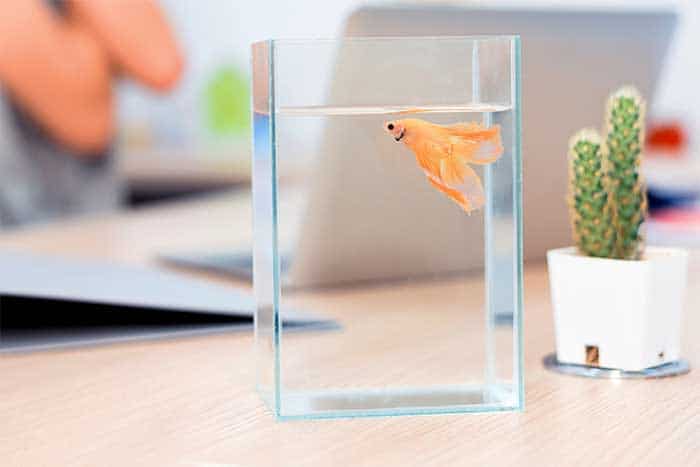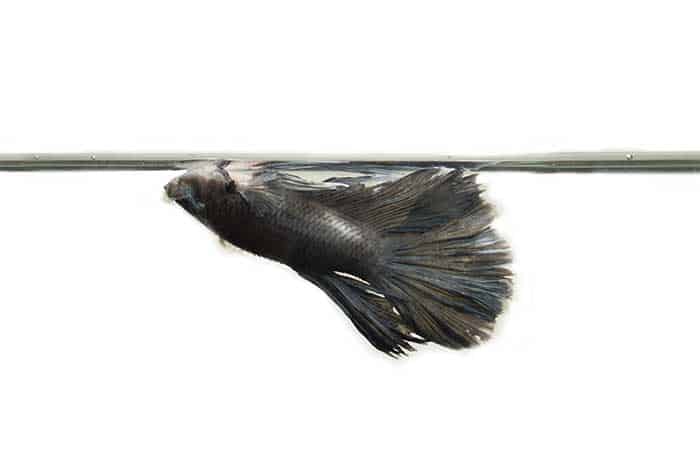How To Tell If A Betta Bubble Nest Has Fertilized Eggs
It’s easy to know when your betta fish are ready to breed, as the male will build a spectacular bubble nest to attract a female mate. If you want to know how to tell if a betta bubble nest has fertilized eggs that are waiting to hatch or whether they are unfertilized (slugs), this article has it covered.
Here are some ways to tell if the betta’s bubble nest has fertilized eggs:
- Observe your betta fish mating – During mating, the pregnant female betta releases eggs from her ovipositor, and the male fertilizes them before using his mouth to place them in the bubble nest.
- Look for white dots in the nest – Fertilized eggs appear as small white dots, similar to grains of salt. Looking closely, you can see these white spots within the bubble nest, and it is unusual for a betta to place unfertilized eggs into the nest.
- Check for signs of movement – Fertilized eggs often show movement within 24 hours of being laid, which indicates that the eggs are alive and growing. If you see any activity, you can be sure the eggs are fertilized.
- Check for developing embryos – If you look closely, you should be able to see a tiny embryo inside each egg after about two days, with small dark eyes. This indicates that the eggs have been fertilized and are growing.
- Wait for hatching – The eggs will typically hatch within two to three days if fertilized. If you wait for this period and the eggs do not hatch, they are likely not fertilized.
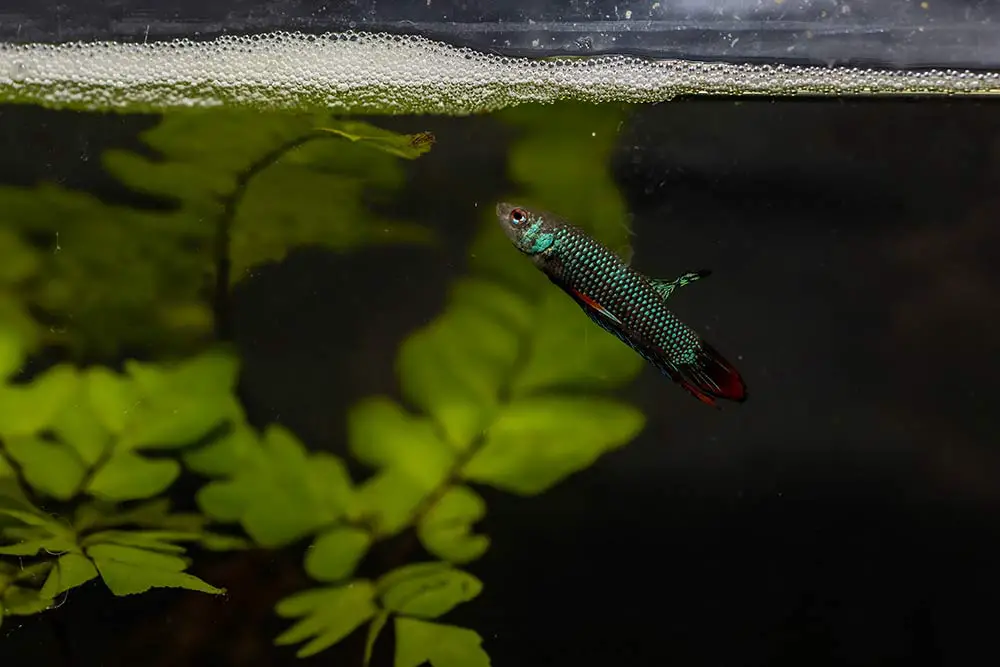
In the early stages, there’s no definite way to tell if a betta’s bubble nest has fertilized eggs, but by following these tips, you can get an idea of whether or not the eggs are viable.
How To Tell If A Betta Bubble Nest Has Eggs
Female betta fish can build bubble nests and lay eggs without a male present to fertilize them, so you may end up with a nest full of unfertilized eggs, commonly known as slugs.
So how can you tell if the bubble nest has eggs, and what’s the difference between how fertilized eggs and unfertilized eggs look?
The easiest way to tell if a bubble nest has eggs is to use a magnifying glass. Most of the bubbles in the nest will appear completely translucent and empty, but a portion should look different. You may observe tiny dots inside the bubbles, which usually signify eggs.
What Color Are Betta Eggs?
Betta eggs are typically white, resembling salt grains. You can tell if betta eggs are fertilized after a couple of days as the eyes develop and appear as dark or black dots while the white body grows.
Before the eggs hatch, the body becomes slightly grey in color as they begin to resemble tadpoles.
What Color Are Unfertilized Betta Eggs?
The reason why it’s difficult to tell if eggs are fertilized or not is that they look the same when first laid.
Unfertilized betta eggs are small white dots no bigger than a grain of salt. Unfertilized eggs aren’t usually placed in the bubble nest. Instead, they are left to sink to the bottom of the tank or eaten by the male or female betta.
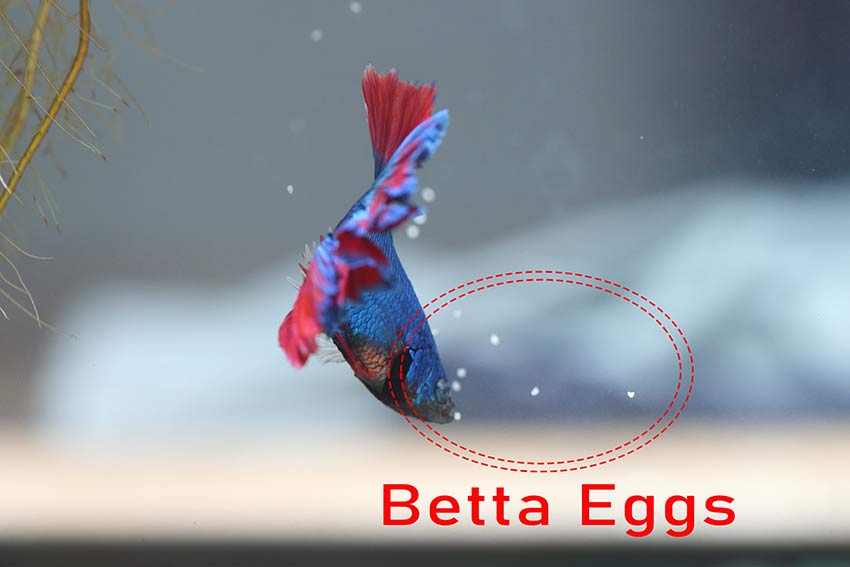
Once a male betta has fertilized the eggs, he becomes protective and carries them to the nest in his mouth for safety. Once safe, he will guard the nest.
It isn’t unheard of to have unfertilized eggs placed in the bubble nest. If the eggs become soft and hazy and begin to dissolve after a few days, you will know they were unfertilized.
Can You See Betta Eggs In The Nest?
Newly laid betta eggs are not easy to see, especially among bubbles. To ensure you don’t miss any, use a magnifying glass and move it slowly across the nest.
If the eggs are fertilized, they will appear as tiny white dots within the bubbles. The dots may be hard to spot due to their size, but if you look closely enough, you should be able to see them.
How Long Do Betta Eggs Take To Hatch?
Betta eggs will usually hatch within two to three days. If the eggs don’t hatch after this time and there are no signs of life, you should remove them from the tank before they rot and become a breeding ground for bacteria.
While waiting for the eggs to hatch, they may fall from the nest, and the male will quickly scoop them back up to safety.
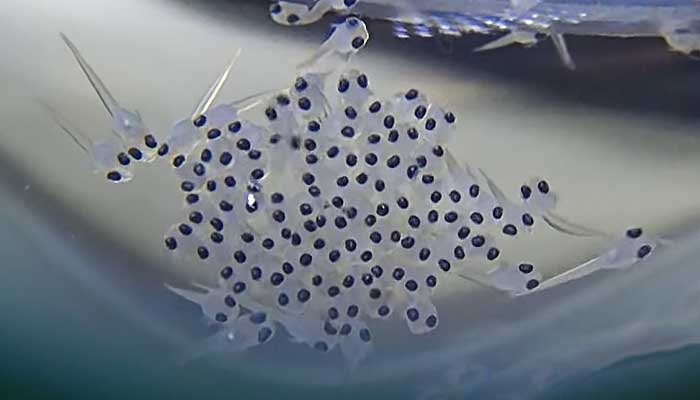
Once hatched, the betta fry remains within the nest, feeding on the egg sacks left behind until they become free swimming.
Why Are Eggs Kept In A Bubble Nest?
Betta bubble nests are an excellent place to keep eggs because they offer protection from bacteria and predators. Bubble nests are pretty robust and can hold eggs firmly in place until hatched, making it easier for the male to protect and monitor them.
Bubble nests are made with a mixture of saliva, substrate, and air that makes them buoyant. The nest can be attached to the underside of leaves and plants or left to float at the surface.
A bubble nest is one of the best places for betta eggs to develop and hatch under optimal conditions.
Should You Remove The Female After Laying Eggs?
Once the female betta fish has done her job, it is best to remove her from the tank, leaving the male to tend the nest. Females are known for becoming aggressive and may try to eat the eggs before hatching.
Leaving a female in the tank will cause the male to become aggressive toward her and away from the nest, leaving it vulnerable. Although this isn’t always the case, it’s better to be safe than sorry and move her out until the eggs have hatched.
Now that you know how to tell if a betta bubble nest has fertile eggs, you can monitor your tank closely for any signs of development.
Conclusion
By reading this guide, you should now tell the difference in appearance between fertilized or unfertilized betta eggs.
Bubble nests aren’t always created for eggs and are sometimes left empty. During mating, the male betta doesn’t always fertilize the eggs, so nothing will grow inside them.
Now that you know how to tell if a betta bubble nest has fertilized eggs, you can be prepared for them to hatch. The next step is to prepare yourself for some newly hatched betta babies with a suitable environment and food.




